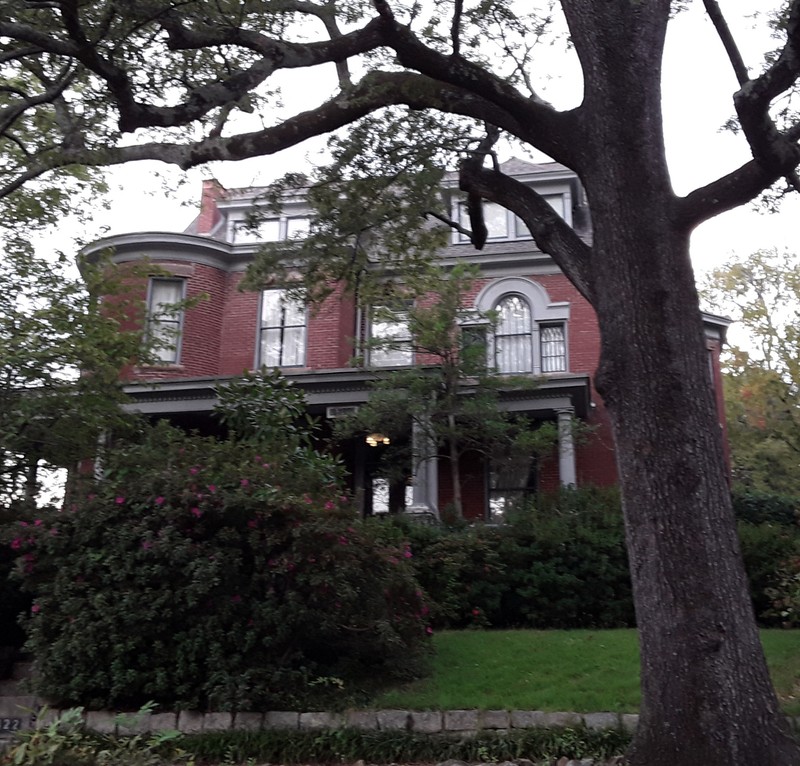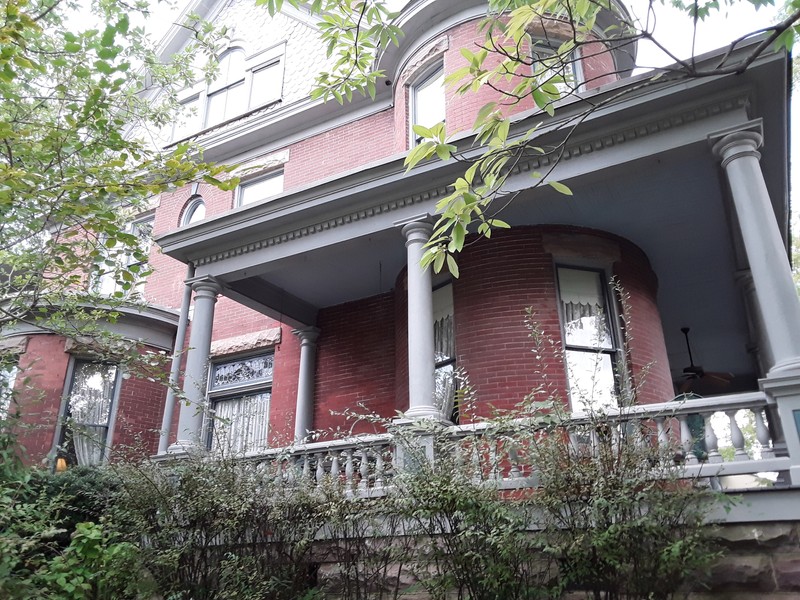Dunklin House
Introduction
Text-to-speech Audio
Images
Dunklin House

Dunklin House, side porch showing bay window

Backstory and Context
Text-to-speech Audio
The architectural design of the Dunklin House uses a mixture of Queen Anne and Colonial Revival features.
The Queen Anne Style in the United States comprises a wide range of picturesque buildings which borrow freely from the architectural features of the Italian Renaissance and avoid the features of English Gothic. Queen Anne Style runs from approximately 1880 to 1910 and refers to architecture, decorative arts, and furniture. In architecture, the Queen Anne Style incorporates distinctive gables and turrets, asymmetrical facades, dominant front-facing gables which are often cantilevered out beyond the supporting wall, pedimented porches, balconies, overhanging eaves, leaded glass, dentils, balustrades, columns, and wooden or slate roofs.
The Colonial Revival Style derives from late nineteenth century American interest in the design of homes built by the earliest Dutch and English settlers in North America.
Dunklin House demonstrates both the Queen Anne and the Colonial Revival Styles. It evidences the Queen Anne Style with its rounded corner turrets and bay windows, curved wrap-around porch, asymmetrical façade, and elaborate decorative flourishes. It represents the Colonial Revival Style with its rectangular footprint, palladian windows, and classical columns.
Sources
The architectural design of the Dunklin House uses a mixture of Queen Anne and Colonial Revival features.
The Queen Anne Style in the United States comprises a wide range of picturesque buildings which borrow freely from the architectural features of the Italian Renaissance and avoid the features of English Gothic. Queen Anne Style runs from approximately 1880 to 1910 and refers to architecture, decorative arts, and furniture. In architecture, the Queen Anne Style incorporates distinctive gables and turrets, asymmetrical facades, dominant front-facing gables which are often cantilevered out beyond the supporting wall, pedimented porches, balconies, overhanging eaves, leaded glass, dentils, balustrades, columns, and wooden or slate roofs.
The Colonial Revival Style derives from late nineteenth century American interest in the design of homes built by the earliest Dutch and English settlers in North America.
Dunklin House demonstrates both the Queen Anne and the Colonial Revival Styles. It evidences the Queen Anne Style with its rounded corner turrets and bay windows, curved wrap-around porch, asymmetrical façade, and elaborate decorative flourishes. It represents the Colonial Revival Style with its rectangular footprint, palladian windows, and classical columns.
